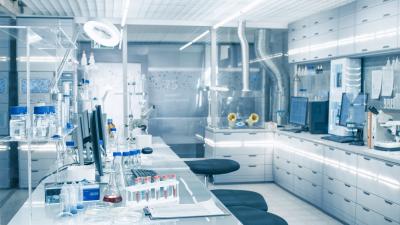Laboratory equipment is designed to deliver reliable performance for years, sometimes even decades, but no equipment lasts forever. No matter how well you take care of it, you will eventually need to replace some of the equipment in your laboratory. Unfortunately, it’s not always easy to determine when it’s time to retire your lab equipment. The good news is there are a few simple steps that you can follow to help you ensure that you are handling repair and replacement proactively to maintain the productivity and performance of your lab.
Space is one of your lab’s most precious resources, and that means you need to use it strategically. Nobody wants to deal with the inconvenience or risk associated with a cluttered lab, but it’s not always easy to find creative ways to organize or design more space into your lab. With that in mind, here are a few key tips that you can follow to maximize your lab space and ensure that your lab is laid out as efficiently and safely as possible.
The equipment you have in your lab is essential when it comes to producing accurate results. However, even the best equipment will eventually wear out and have to be replaced. While you can’t avoid this entirely, there are things you can do today to ensure your lab equipment is in good shape for years to come.
Here at Labnet International, we cover many different topics in the interest of helping our customers get the most out of their laboratory equipment purchases. But, we also understand with today’s busy schedules, you might not always have the time to keep track of them all!
That’s why today, we are providing our ‘short list’ of most important resources-- so that you can easily find the information that you need.
In the lab, you often have to juggle different priorities to ensure things run smoothly. From the safety of your lab technicians to the performance of your lab equipment, there are many things to consider.
Here at Labnet International, we are proud of every single product we offer. This week, we showcase our Orbit™ 300 Multipurpose Digital Vortexer. This multi-purpose shaker offers superior quality, consistency, and durability for a wide range of laboratory applications. Find out more about all of the great features of the Orbit™ 300 Vortexer so you can determine whether your lab could benefit from the addition of this piece of equipment.
Opening a new lab is always an exciting adventure, but once you’ve done some broad planning for your startup lab, it’s time to get down to the details of exactly which tools and equipment you’ll need. Although every lab is different, there are certain pieces of lab equipment that are staples in virtually every facility. Knowing a little bit more about these essential pieces of equipment will help you properly equip your startup lab.
Starting any business from scratch can be daunting, and it’s especially challenging when your new venture involves equipping a laboratory with all of the sophisticated tools, instruments and equipment you’ll need to get started. Equipping a lab can be complicated, and it can also be expensive. In the interest of saving money, it’s not uncommon for laboratory supervisors to cut corners when it comes to equipment quality. Unfortunately, skimping on quality is a sure-fire way to end up with inconsistent results and unproductive laboratory processes.
In research labs, molecular biology labs, and other labs that focus on the identification of RNA and DNA proteins, hybridization ovens are essential. These convection ovens are designed for molecular assays and are especially useful for Northern, Southern, and Western blots.
Quality hybridization ovens are incredibly effective at thoroughly mixing materials. Typically, these ovens have a keypad that allows the user to control the temperature in the chamber depending on the application. Labnet International hybridization ovens are designed to meet the highest standards of quality.
Along with our laboratory shakers, rockers and rotators, Labnet International has your requirements for Vortex mixing covered.
- 1 of 2
- next ›










